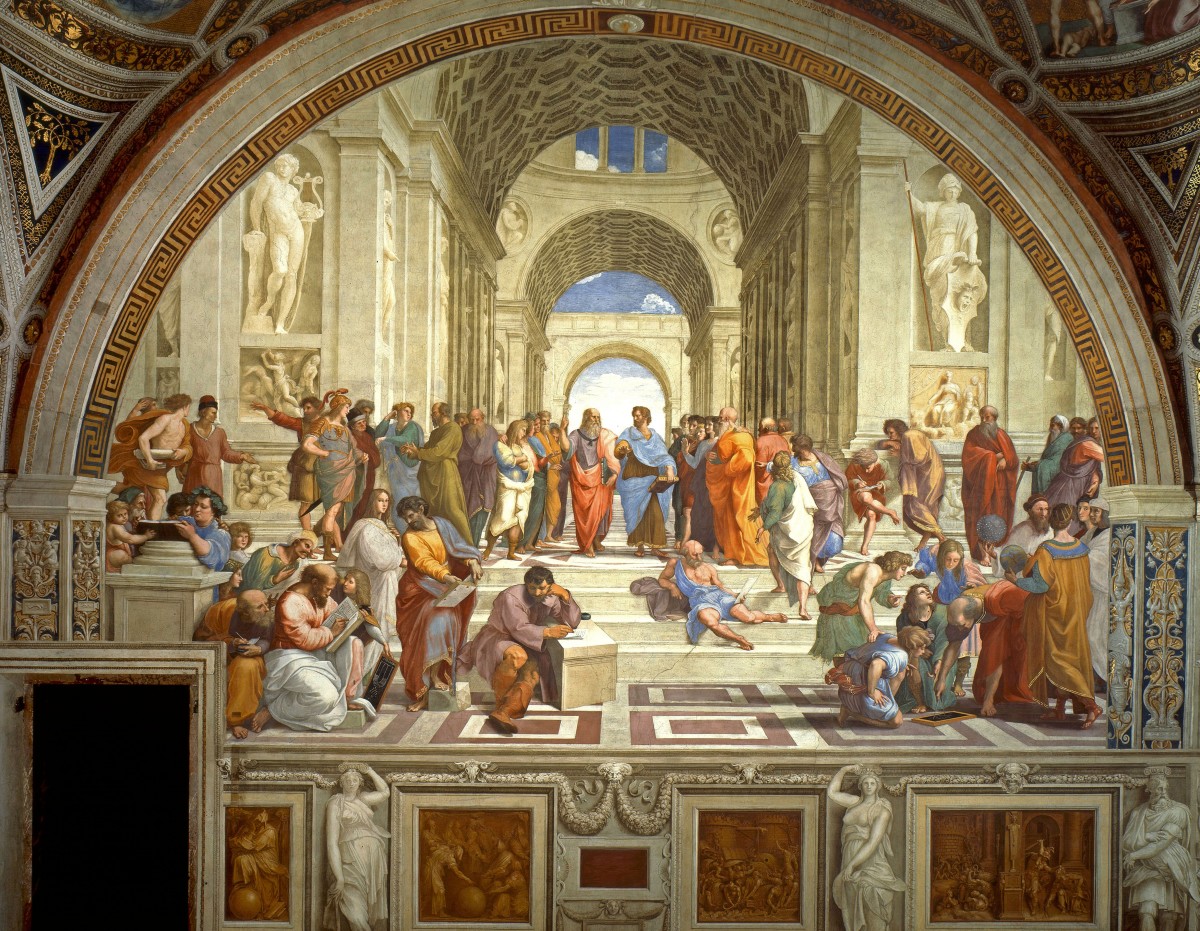In 1546, at the age of seventy, Michelangelo agreed to become the chief architect of St. Peter’s in Rome. St. Peter’s exemplifies many of the features that distinguish Renaissance architecture from Gothic. Gothic cathedrals were topped by great spires and towers; Sc. Peter’s was crowned by Michelangelo’s massive dome, which rises 435 feet above the floor. Gothic buildings, with their great windows, pointed arches, and high-flung vaults, create an impression of aspiration and grace, of scarcely being earthbound; St. Peter’s appears indestructible and utterly stable because of its heavier walls, stout columns, and round arches.
Renaissance architects shared the humanists’ enthusiasm for Platonic concepts of perfect ideas and perfect geometrical forms. Andrea Palladio (1508- I 580), the leading architectural theorist of the cinquecento, stressed the symbolic value of designing churches on the plan of the Greek cross, which had four arms of equal length, in contrast to the Latin cross used in Gothic churches, which had one long arm forming the nave.
If the ends of the arms of the Greek cross were rounded and the spaces between the arms filled with rounded chapels, then the structure became a circle. Palladio himself designed many elegant structures: the Church of San Giorgio Maggiore on an island at the mouth of the Grand Canal in Venice, palaces, public buildings, villas, and a Greek theater in the area of Vicenza, his home town. He also wrote a four-volume study on architecture that spread the influence of the Palladian style.
In Renaissance Europe private individuals could afford lavish residences, and the increasing prevalence of law and order meant that a home no longer needed to be a fortess. Elaborate villas dotted the Italian countryside; in the cities the characteristic structure was the palazzo, an imposing townhouse combining business and residential apartments; many examples survive throughout Italy.

